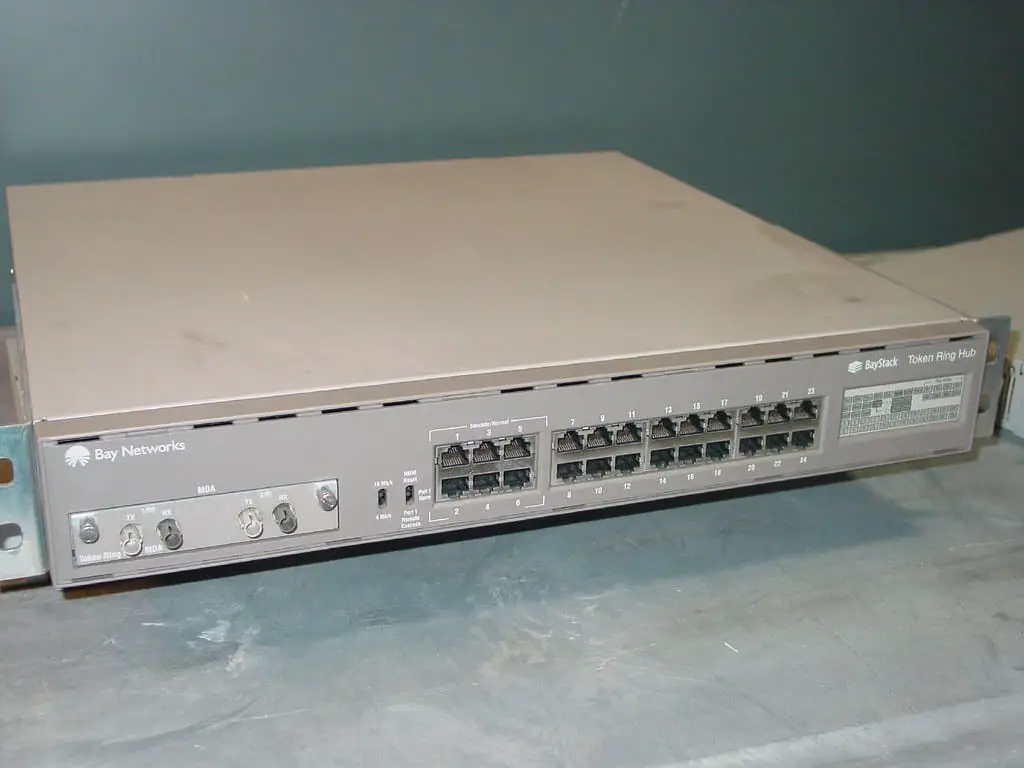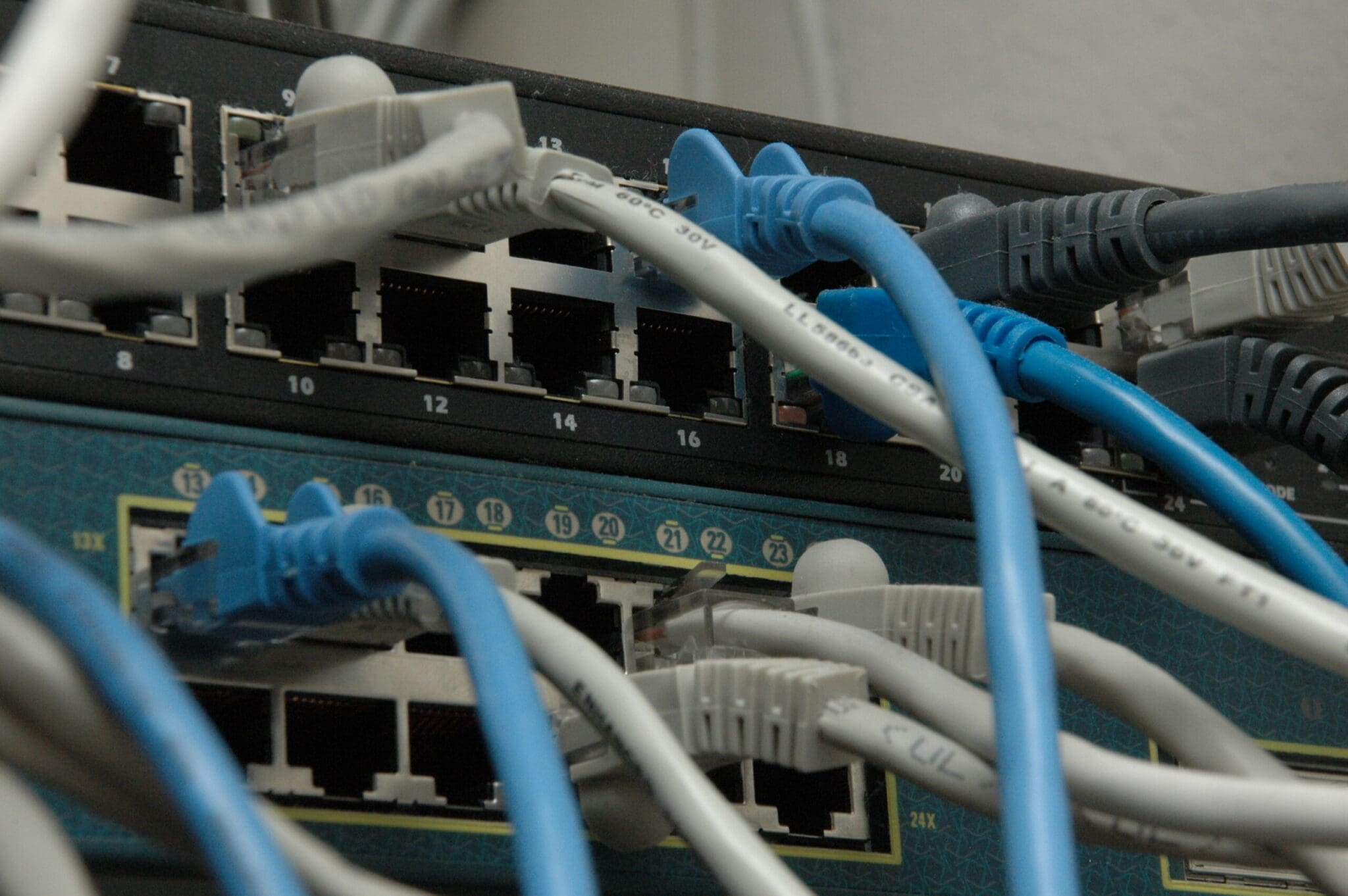Hubs and switches are examples of networking equipment that fulfil different tasks in an Ethernet network at different levels.
Even if they are occasionally combined into a single device, the functions of these devices are relatively different from one another.
Key Takeaways
- Hubs are networking devices that broadcast incoming data packets to all connected devices, while switches intelligently forward data packets only to the intended recipient.
- Switches are more efficient than hubs, reducing network congestion and improving overall network performance by preventing unnecessary data transmission.
- Hubs operate at the OSI model’s physical layer (Layer 1). At the same time, switches function at the data link layer (Layer 2), enabling them to process MAC addresses and manage traffic more effectively.
Hub vs Switch
A hub is a simple networking device that sends data packets to all devices connected to it, regardless of whether the packet is intended for that device. A switch is a sophisticated networking device that intelligently routes data packets to the intended device based on the device’s MAC address.

A hub is a device that connects LAN segments (Local Area Networks). A hub is a device that has several ports.
When a packet arrives at one port, it is copied to all other ports in the LAN, allowing all segments to see all packets. A network’s hub serves as a central connection point for all devices.
A switch is a type of networking device. It links and routes data between various devices on the same network. The Switch operates on a data connection layer.
The data packet is transmitted over the network using packet-switching technology. It operates at the data link layer, which means that it can support packet protocol.
Comparison Table
| Parameters of Comparison | Hub | Switch |
|---|---|---|
| Layer | Physical layer | Datalink layer |
| Transmission Mode | Half | full |
| Intelligent Category Device | It is not considered an intelligent category device. | It is considered an intelligent category device. |
| Speed. | 10 Mbps | 10 Mbps to 1 Gbps |
| Ports | 4/12 | 24/48 |
| Types of Devices | Passive | Active |
| Transmission Type | Multicast, broadcast, unicast, or frame flooding. | First broadcast and then unicast or multicast. |
| Form of Data Transmission | Bits | Frame and packets |
| Spanning Tree | None possible | Various are possible |
| Manufacturers | Cisco, Oracle, and Sun Systems. | Cisco and D-link Juniper |
What is Hub?
A hub is used to connect networking devices physically and to create multiple station hierarchies. Hubs are unable to interact and analyze information appropriately at the layer 2 and layer 3 levels.
It decides on a physical basis rather than on the basis of hardware and logic.
This hub, which is also known as a repeater, sends the amplified signal to all ports save the one where it was received. It’s used to send boosted signals to all ports except the one that’s responsible for sending the signal out.
It’s useful for physically connecting networking equipment to make communication easier. A hub successfully builds numerous hierarchies of the required stations.
Hubs are unable to process Layer 3 and Layer 2 information and perform intelligent forwarding. With the use of physical addressing, a hub performs and makes choices.
The traffic that a hub receives is sent to the machines that are linked to it. Any traffic that enters one port exits through the other. As a result, even if the communication is not intended for them, it is received by all computers.
It joins LAN segments and helps connect several devices to a single network. The physical layer of a hub is where it all happens, and it has a lot of ports.
Any device that wants to connect to the internet can plug into one of these ports.

What is Switch?
A switch is simply a bridge that allows for better bridging. In a broad sense, a switch is a device that sets up and terminates connections according to criteria.
Filtering, flooding, and frame transmission are just a few of the characteristics. The function requires the target address of the frames that it learns from the original MAC address.
In the context of a computer network, a switch is a bridge that opens the way for more efficient connections and termination. It is in charge of performing a variety of functions, such as flooding, filtering, and frame transfer.
Every port is equipped with its own collision domain. As a result, the number of collisions created by a switch is far lower than that of a hub. Its transmission mode is full-duplex.
A switch has a broadcast domain, just like a hub. Except for the originating port, it can send both multicasts and broadcasts out of each port. It is a device that filters and forwards packets between LAN segments in a network.
When traffic comes in, the switch reads the destination address and directs it to the proper computer rather than all of the connected computers.
The switch transmits traffic to all connected computers if the destination address is not in the table.

Main Differences Between Hub and Switch
- Hubs work in Layer 1 and consist of a physical layer, whereas switch is considered a data link layer, and they operate in Layer 2.
- The transmission mode of a hub is half-duplex, whereas that of a switch is a full-duplex.
- Hub is not considered an intelligent category device, whereas a Switch is considered one.
- Hubs tend to have a maximum of 4 ports, whereas a switch can have anywhere from 24 to 48 ports.
- Hubs are considered passive devices, and a Switch is considered an active device.
- The transmission type in a Hub is multicast, unicast, broadcast, or frame flooding, whereas in a Switch, at the initial level, there is broadcast and then either multicast or unicast.
- The form of data transmission in a hub is either bits or electrical signals, whereas, in a Switch, it is frames and packets.
- In a hub, there is no spanning tree possible, whereas, in a Switch, there are various instances of spanning trees possible.
- The manufacturers of a hub are Cisco, Oracle, and Sun Systems, and the manufacturers of a Switch are Cisco and D-Link Juniper.



